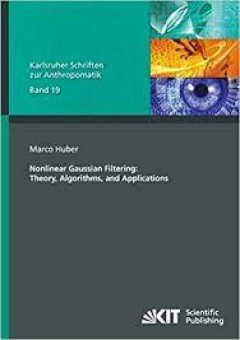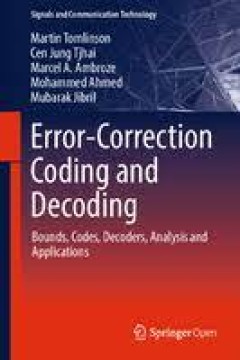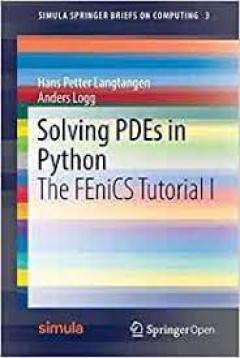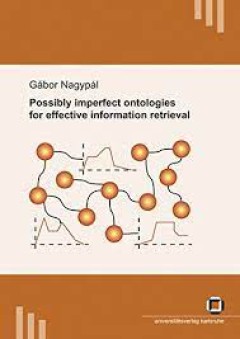Filter by

Computer Algebra in Scientific Computing
Although scientific computing is very often associated with numeric computations, the use of computer algebra methods in scientific computing has obtained considerable attention in the last two decades. Computer algebra methods are especially suitable for parametric analysis of the key properties of systems arising in scientific computing. The expression-based computational answers generally pr…
- Edition
- -
- ISBN/ISSN
- 978-3-03921-731-1
- Collation
- -
- Series Title
- -
- Call Number
- 005 COM

Directional Estimation for Robotic Beating Heart Surgery
In robotic beating heart surgery, a remote-controlled robot can be used to carry out the operation while automatically canceling out the heart motion. The surgeon controlling the robot is shown a stabilized view of the heart. First, we consider the use of directional statistics for estimation of the phase of the heartbeat. Second, we deal with reconstruction of a moving and deformable surface. …
- Edition
- -
- ISBN/ISSN
- 9783731503828
- Collation
- -
- Series Title
- -
- Call Number
- 004.0288 KUR d

MATLAB® Recipes for Earth Sciences
MATLAB® is used for a wide range of applications in geosciences, such as image processing in remote sensing, the generation and processing of digital elevation models and the analysis of time series. This book introduces methods of data analysis in geosciences using MATLAB, such as basic statistics for univariate, bivariate and multivariate datasets, time-series analysis, signal processing, th…
- Edition
- -
- ISBN/ISSN
- 978-3-662-46244-7
- Collation
- -
- Series Title
- -
- Call Number
- -

Health Monitoring and Personalized Feedback using Multimedia Data
This book presents how multimedia data analysis, information retrieval and indexing are central for comprehensive, personalized, adaptive quality care and the prolongation of independent living at home. With sophisticated technologies in monitoring, diagnosis, and treatment, multimodal data plays an increasingly central role in healthcare. Experts in computer vision, image processing, medical i…
- Edition
- -
- ISBN/ISSN
- 978-3-319-17962-9
- Collation
- VIII, 283
- Series Title
- -
- Call Number
- 004 HAN

The Impact of Pen and Touch Technology on Education
This book presents perspectives for and by teachers, school and university administrators and educational researchers regarding the great impact pen and tablet technology can have on classrooms and education. presents three distinctly valuable threads of research: Emerging technologies and cutting-edge software invented by researchers and evaluated through real classroom deployments. Fir…
- Edition
- -
- ISBN/ISSN
- 978-3-319-15594-4
- Collation
- XXXIV, 387
- Series Title
- Human–Computer Interaction Series
- Call Number
- -

Nonlinear Gaussian Filtering : Theory, Algorithms, and Applications
By restricting to Gaussian distributions, the optimal Bayesian filtering problem can be transformed into an algebraically simple form, which allows for computationally efficient algorithms. Three problem settings are discussed in this thesis: (1) filtering with Gaussians only, (2) Gaussian mixture filtering for strong nonlinearities, (3) Gaussian process filtering for purely data-driven scenari…
- Edition
- -
- ISBN/ISSN
- 978-3-7315-0338-5
- Collation
- -
- Series Title
- -
- Call Number
- 510 HUB n

Error-Correction Coding and Decoding : Bounds, Codes, Decoders, Analysis and …
This book discusses both the theory and practical applications of self-correcting data, commonly known as error-correcting codes. The applications included demonstrate the importance of these codes in a wide range of everyday technologies, from smartphones to secure communications and transactions. Written in a readily understandable style, the book presents the authors’ twenty-five years of …
- Edition
- -
- ISBN/ISSN
- 978-3-319-51103-0
- Collation
- -
- Series Title
- -
- Call Number
- 003 TOM e

Scaling a Software Business : The Digitalization Journey
Software has changed the rules of the game. The world talks about the digitalization in industry and society – how the focus has shifted from producing tangible things towards software and services. This trend started many years ago, but is now affecting every company, whether it’s a software company or not. There are many companies that have already made a digitalization journey – and ma…
- Edition
- -
- ISBN/ISSN
- 978-3-319-53116-8
- Collation
- XXIII, 242 halaman
- Series Title
- -
- Call Number
- 005 FIT s

Solving PDEs in Python : The FEniCS Tutorial I
This book offers a concise and gentle introduction to finite element programming in Python based on the popular FEniCS software library. Using a series of examples, including the Poisson equation, the equations of linear elasticity, the incompressible Navier–Stokes equations, and systems of nonlinear advection–diffusion–reaction equations, it guides readers through the essential steps to …
- Edition
- -
- ISBN/ISSN
- 978-3-319-52462-7
- Collation
- XI, 146 halaman
- Series Title
- Simula Springer Briefs on Computing
- Call Number
- 005 LAN s

Possibly imperfect ontologies for effective information retrieval
Ontologies and semantic metadata can theoretically solve all problems of traditional full-text search engines. In practice, however, they are always imperfect. This work analyzed whether the negative effect of ontology imperfection is higher than the positive effect of exploiting the ontology features for IR. To answer this question, a complete ontology-based information retrieval system was im…
- Edition
- -
- ISBN/ISSN
- 978-3-86644-190-3
- Collation
- -
- Series Title
- -
- Call Number
- 003 NAG p
 Computer Science, Information & General Works
Computer Science, Information & General Works  Philosophy & Psychology
Philosophy & Psychology  Religion
Religion  Social Sciences
Social Sciences  Language
Language  Pure Science
Pure Science  Applied Sciences
Applied Sciences  Art & Recreation
Art & Recreation  Literature
Literature  History & Geography
History & Geography